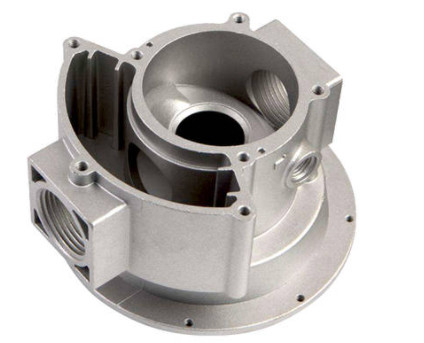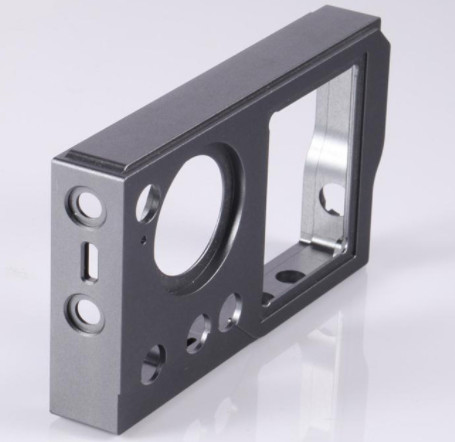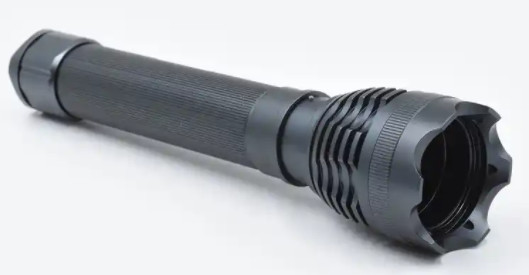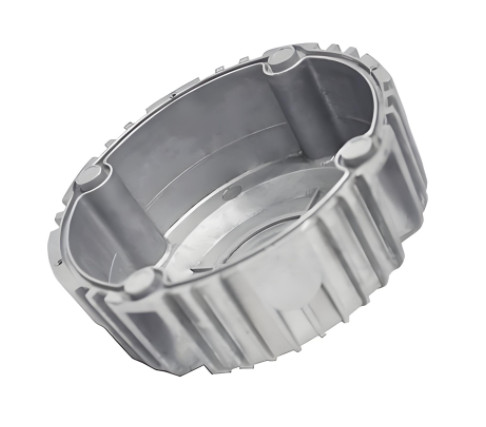Enclosures, also known as housings, are protective casings designed to safeguard electronic, mechanical, or industrial components from environmental factors, physical damage, and electromagnetic interference. This guide provides a systematic, technical overview of enclosure types, materials, applications, and regulatory standards. It is tailored for engineers, manufacturers, and designers seeking precise, professional insights. The content is structured for clarity, includes detailed parameters, and focuses on functionality and compliance, avoiding speculative or artistic language.
Types of Enclosures
Enclosures vary by application, size, and protection level. The type selected depends on the component’s function, environment, and industry requirements. Below are the primary enclosure types used in technical applications.
Electronics Enclosures
Electronics enclosures protect circuit boards, wiring, and sensitive components from dust, moisture, and impact. They are common in consumer electronics, industrial controls, and telecommunications.
- Dimensions: 50 mm x 50 mm x 20 mm to 500 mm x 300 mm x 150 mm
- Weight: 0.5–10 kg
- Protection Rating: IP54–IP68 (Ingress Protection)
- Common Features: Ventilation slots, mounting brackets, sealed gaskets

Industrial Enclosures
Industrial enclosures house heavy-duty equipment, such as motors, pumps, or control panels, in harsh environments like factories or outdoor sites.
- Dimensions: 300 mm x 200 mm x 150 mm to 2000 mm x 1000 mm x 800 mm
- Weight: 10–200 kg
- Protection Rating: IP65–IP67, NEMA 4X
- Common Features: Lockable doors, corrosion-resistant coatings

Portable Device Enclosures
Portable device enclosures are compact casings for handheld devices, such as medical equipment, remote controls, or IoT sensors, prioritizing lightweight design and durability.
- Dimensions: 20 mm x 50 mm x 10 mm to 200 mm x 100 mm x 50 mm
- Weight: 0.1–2 kg
- Protection Rating: IP40–IP65
- Common Features: Ergonomic grips, impact-resistant shells

Outdoor Enclosures
Outdoor enclosures protect components in extreme conditions, such as rain, UV exposure, or temperature fluctuations, used in telecommunications, solar power, or traffic systems.
- Dimensions: 400 mm x 300 mm x 200 mm to 1500 mm x 1000 mm x 600 mm
- Weight: 15–150 kg
- Protection Rating: IP66–IP68, NEMA 4
- Common Features: UV-resistant coatings, thermal insulation

Enclosure Materials
Material selection impacts an enclosure’s durability, weight, cost, and environmental resistance. The table below details common materials and their properties.
| Material | Common Uses | Cost per kg | Durability (Years) | Environmental Resistance |
|---|---|---|---|---|
| Aluminum | Electronics, outdoor enclosures | $2–$5 | 20–50 | High (corrosion-resistant) |
| Stainless Steel | Industrial, medical enclosures | $4–$10 | 30–60 | Very high (chemical-resistant) |
| Polycarbonate | Portable devices, electronics | $3–$8 | 10–25 | Moderate (UV-sensitive) |
| ABS Plastic | Consumer electronics, portable devices | $1–$4 | 5–20 | Low (moisture-sensitive) |
Construction Methods for Enclosures
Construction methods determine an enclosure’s structural integrity, production speed, and cost. The method chosen depends on the application and production scale.
Injection Molding
Injection molding is used for plastic enclosures, particularly for high-volume production of portable devices or electronics. Molten plastic is injected into a mold to form precise shapes.
- Production Time: 20–60 seconds per unit
- Tooling Cost: $10,000–$100,000 per mold
- Unit Cost: $0.5–$5 per unit
- Applications: Consumer electronics, medical devices
Pain Point: High initial tooling costs can limit feasibility for low-volume production, requiring manufacturers to balance economies of scale with design flexibility.
Sheet Metal Fabrication
Sheet metal fabrication involves cutting, bending, and assembling metal sheets to create enclosures, commonly used for industrial and outdoor applications.
- Production Time: 1–5 hours per unit
- Cost: $50–$500 per unit
- Material Thickness: 0.5–6 mm
- Applications: Control panels, server racks
Pain Point: Precision alignment during assembly is critical, as small errors can compromise sealing and protection ratings, leading to costly rework.
Die Casting
Die casting uses molten metal (e.g., aluminum or zinc) poured into molds for high-strength enclosures, suitable for electronics and automotive applications.
- Production Time: 30–90 seconds per unit
- Tooling Cost: $20,000–$200,000 per mold
- Unit Cost: $2–$10 per unit
- Applications: Automotive housings, telecom enclosures
Applications of Enclosures
Enclosures are used across industries to protect components and ensure operational reliability. This section details key applications, focusing on their specific requirements and technical parameters.
Consumer Electronics
Enclosures for consumer electronics, such as smartphones, laptops, and home appliances, prioritize compact design, aesthetics, and moderate environmental protection.
- Typical Dimensions: 100 mm x 50 mm x 10 mm to 400 mm x 300 mm x 50 mm
- Materials: ABS plastic, polycarbonate, aluminum
- Protection Rating: IP40–IP65
- Weight: 0.1–5 kg
Pain Point: Balancing lightweight design with durability often increases material costs, as consumers demand sleek yet robust enclosures.
Industrial Automation
Enclosures in industrial automation protect control systems, PLCs, and sensors in factories or processing plants, requiring high durability and resistance to dust, vibration, and chemicals.
- Typical Dimensions: 500 mm x 400 mm x 200 mm to 1500 mm x 1000 mm x 600 mm
- Materials: Stainless steel, aluminum
- Protection Rating: IP65–IP67, NEMA 4X
- Weight: 20–200 kg
Telecommunications
Telecommunications enclosures house equipment like routers, antennas, and power supplies, often installed outdoors, requiring robust weatherproofing and thermal management.
- Typical Dimensions: 600 mm x 400 mm x 300 mm to 1200 mm x 800 mm x 500 mm
- Materials: Aluminum, fiberglass
- Protection Rating: IP66–IP68
- Thermal Management: 50–300 W heat dissipation
Medical Devices
Medical device enclosures protect diagnostic or monitoring equipment, requiring sterilization compatibility, lightweight design, and EMI shielding.
- Typical Dimensions: 50 mm x 50 mm x 20 mm to 300 mm x 200 mm x 100 mm
- Materials: Polycarbonate, stainless steel
- Protection Rating: IP54–IP65
- EMI Shielding: 20–60 dB attenuation
Regulatory Standards
Enclosures must comply with industry standards to ensure safety, performance, and market acceptance. Compliance is critical for commercial products.
International Standards
Global standards, such as IEC and UL, govern enclosure safety and performance.
- IEC 60529: Defines IP ratings for dust and water resistance
- UL 50: Specifies requirements for electrical enclosures
- Compliance Cost: $5,000–$20,000 for testing and certification
Regional Standards
Regional regulations, such as NEMA in the U.S. or CE marking in Europe, ensure enclosures meet local safety and environmental requirements.
- NEMA 250: Covers enclosure types for electrical equipment
- CE Marking: Mandatory for EU market, includes EMC and safety
- Certification Time: 4–12 weeks
Key Parameters for Enclosure Selection
Selecting the right enclosure involves evaluating application-specific requirements. The table below summarizes critical parameters across applications.
| Parameter | Consumer Electronics | Industrial Automation | Telecommunications | Medical Devices |
|---|---|---|---|---|
| IP Rating | IP40–IP65 | IP65–IP67 | IP66–IP68 | IP54–IP65 |
| Material | ABS, Polycarbonate | Stainless Steel | Aluminum, Fiberglass | Polycarbonate, Steel |
| Weight (kg) | 0.1–5 | 20–200 | 15–150 | 0.5–10 |
| Cost per Unit ($) | 2–50 | 100–1000 | 200–2000 | 10–100 |
Summary
This guide provides a technical foundation for understanding enclosures in various applications. By detailing types, materials, construction methods, applications, and regulatory standards, it equips professionals with the knowledge to select and design enclosures that meet performance and compliance requirements. For further details on specific standards or certifications, consult relevant regulatory bodies or custom machining manufacturers.
Enclosures: Types, Materials, and Applications – FAQ
What is an enclosure?
An enclosure is a protective structure or housing designed to contain, shield, or secure objects—such as electrical components, machinery, instruments, or even living organisms—from external factors like dust, moisture, physical damage, or environmental hazards. Its primary role is to preserve the functionality and integrity of the items inside while often managing factors like temperature, access, or visibility.
When should I choose metal vs. plastic enclosures?
Choose metal for high durability, EMI/RFI (radio-frequency interference) shielding, or resistance to extreme temperatures (e.g., industrial machinery, outdoor electrical panels).
Choose plastic for lightweight needs, corrosion resistance in mild environments, lower cost, or when non-conductivity is critical (e.g., consumer electronics, indoor instrument cases).
Are there enclosures classified by shape or design?
Yes, design-based classifications include:
Box enclosures: Rectangular or square, the most common type for general use (e.g., electrical junction boxes).
Rack enclosures: Tall, standardized frames (e.g., 19-inch server racks) for organizing equipment in data centers.
Console enclosures: Ergonomic designs with sloped surfaces for housing control panels (e.g., industrial operator stations).
Custom enclosures: Tailor-made to fit unique components, often used in specialized industries like aerospace.
